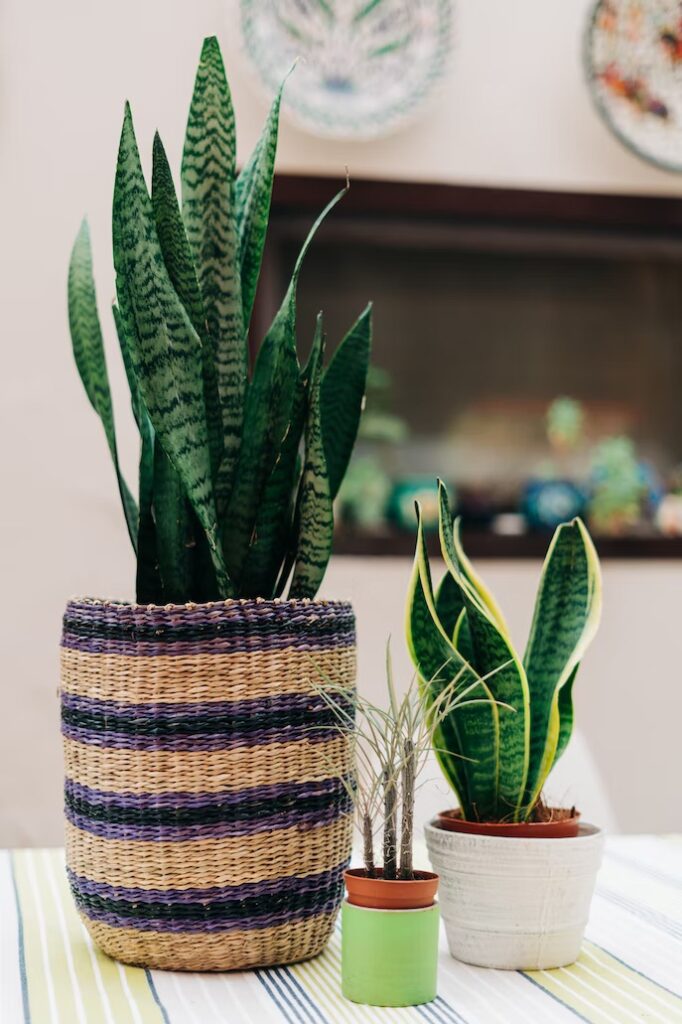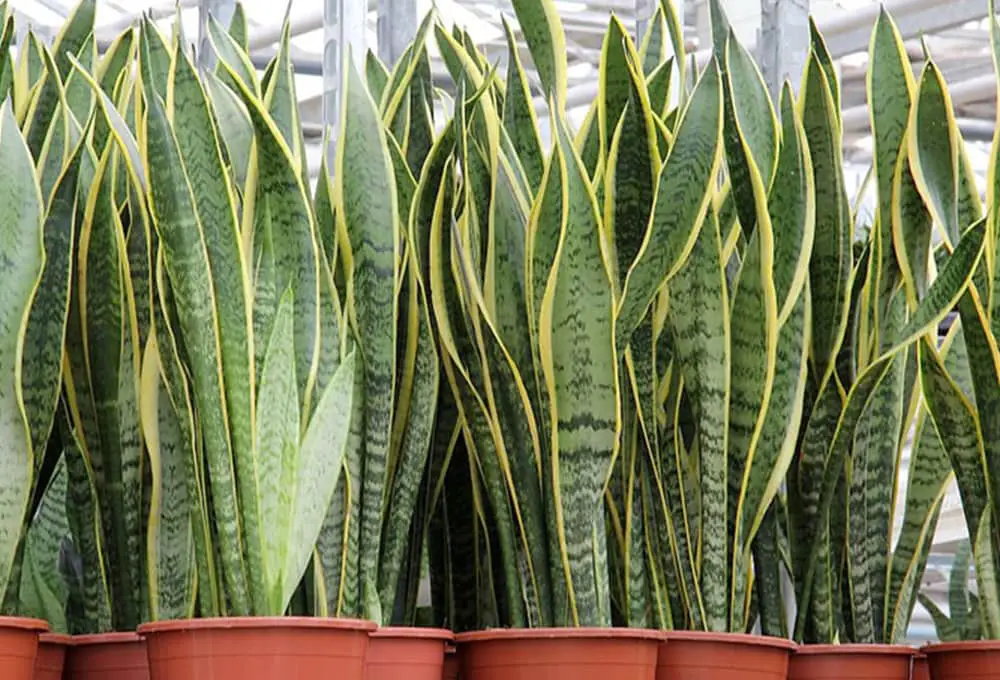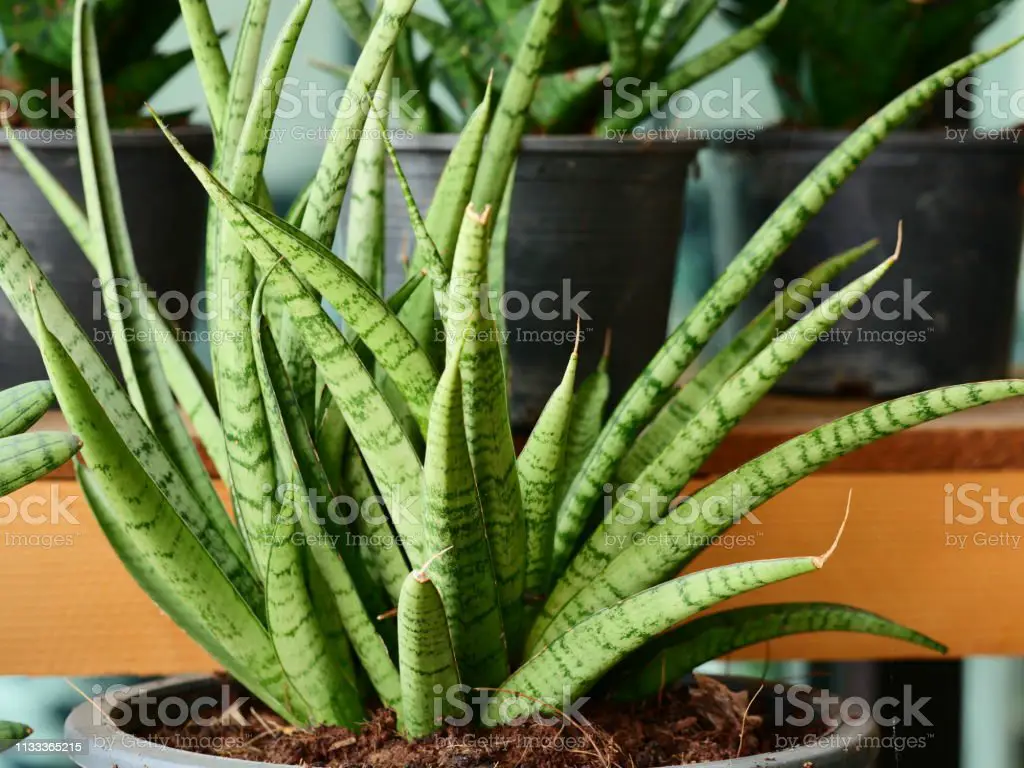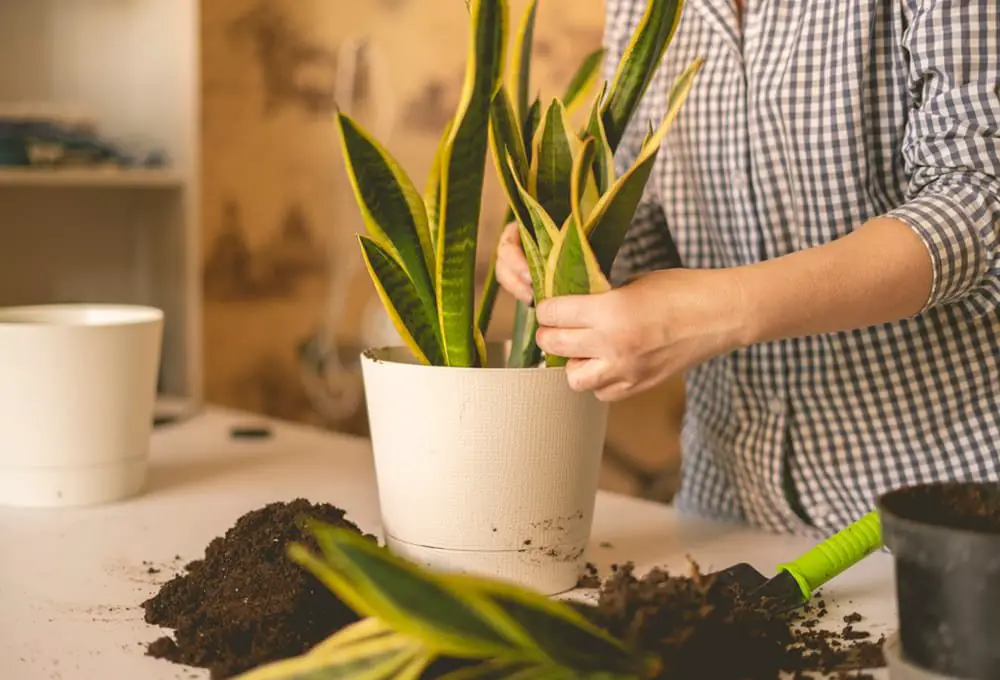Sansevieria (snake plant) or mother-in-law’s tongue, is a type of plant that is native to tropical regions of West Africa. The snake plant has long upright leaves that are typically green with yellow or white bands. Snake plants purify the air by removing toxins such as benzene, formaldehyde, and trichloroethylene from the air. Snake plants have several health benefits including stress reduction, improving sleep, and improving mood. Overall, snake plants are a great choice for anyone looking for a low-maintenance and attractive indoor plant.
Snake plants have a tolerance for growing in low light conditions and various temperatures. In their West African habitat, snake plants grow in shaded areas with moderate humidity, with temperatures ranging from 50-85°F (10-30°C). Snake plants can be grown outdoors in similar conditions, however may not survive in colder climates. So it is best to grow them indoors as houseplants. However, they can benefit from occasional outdoor exposure during the warmer months, such as on a covered patio or balcony.

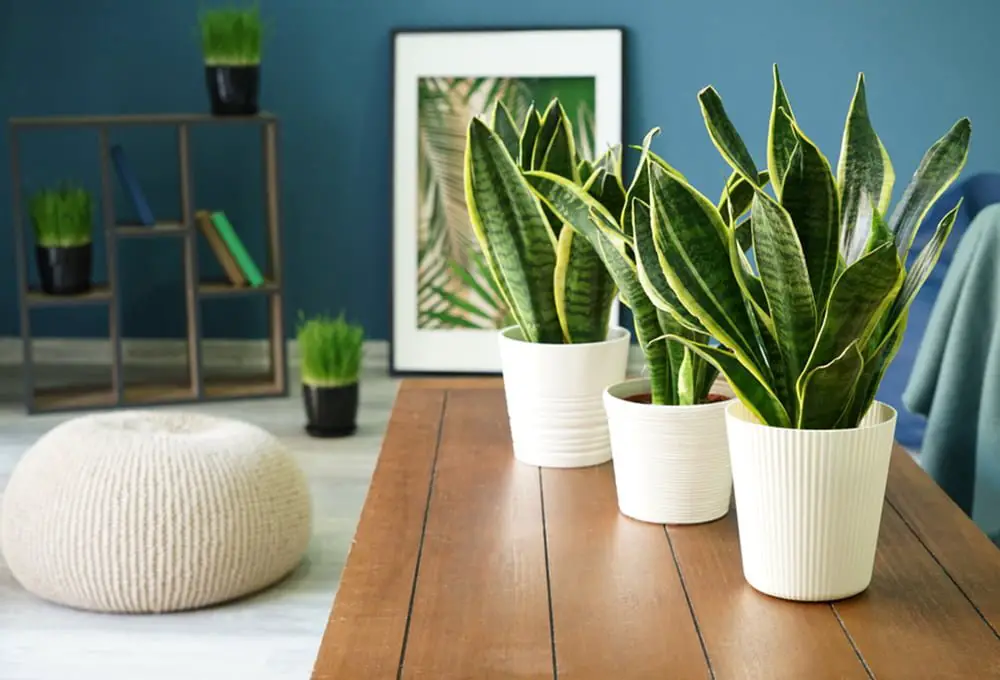
Table of Contents
Snake plants for indoor gardening
Snake plants are well-suited for indoors as they can tolerate low light conditions. They do not require frequent watering. Some of the best snake plants to choose for indoor growing include:
- Sansevieria trifasciata: This is the most common type of snake plant and is a great choice for beginners. It has long, pointed leaves that are green with yellow or white stripes and can grow up to three feet tall.
- Sansevieria cylindrica: This variety has long, cylindrical leaves that are green with light gray-green stripes. It is a compact plant that can fit on a windowsill or small table.
- Sansevieria laurentii: This variety has long, pointed leaves that are green with yellow margins. It is a tall plant that can reach up to four feet in height.
- Sansevieria moonshine: This variety has long, silvery-gray leaves that are wider than those of most other snake plants. It is a smaller plant that is ideal for tabletops or shelves.
- Sansevieria futura robusta: This variety has long, pointed leaves that are green with yellow margins. It is a larger plant that can grow up to four feet tall and is great for filling empty spaces in a room.
Most snake plants are relatively low maintenance making them ideal for indoor growing. Also consider factors such as availability of lighting, space and humidity level of your home.
Complimentary plants for snake plants
There are many additional options that can complement snake plants, these include:
- Pothos: Pothos is a trailing plant that can grow well in low to medium light conditions. Its variegated leaves can provide a nice contrast to the long, upright leaves of a snake plant.
- ZZ plant: ZZ plant is another low-maintenance indoor plant that can thrive in a variety of light conditions. Its shiny, dark green leaves can provide a nice contrast to the lighter, more textured leaves of a snake plant.
- Rubber plant: Rubber plants have large, glossy leaves that can add a touch of drama and sophistication to any indoor space. They also prefer similar light and watering conditions as snake plants, making them a good companion plant.
- Peace lily: Peace lilies are known for their elegant white flowers and dark green leaves, which can provide a nice contrast to the long, narrow leaves of a snake plant. They also prefer low to medium light conditions, making them a good companion for snake plants.
- Spider plant: Spider plants are easy to care for and can thrive in a variety of light conditions. They also produce small, white flowers and cascading foliage that can complement the upright growth habit of a snake plant.
There are various types of indoor plants that can compliment snake plants. These will depend on your personal preferences and the conditions of your space. You can experiment with different combinations of plants, to create a thriving indoor garden that brings natural beauty and tranquility to your home or office.
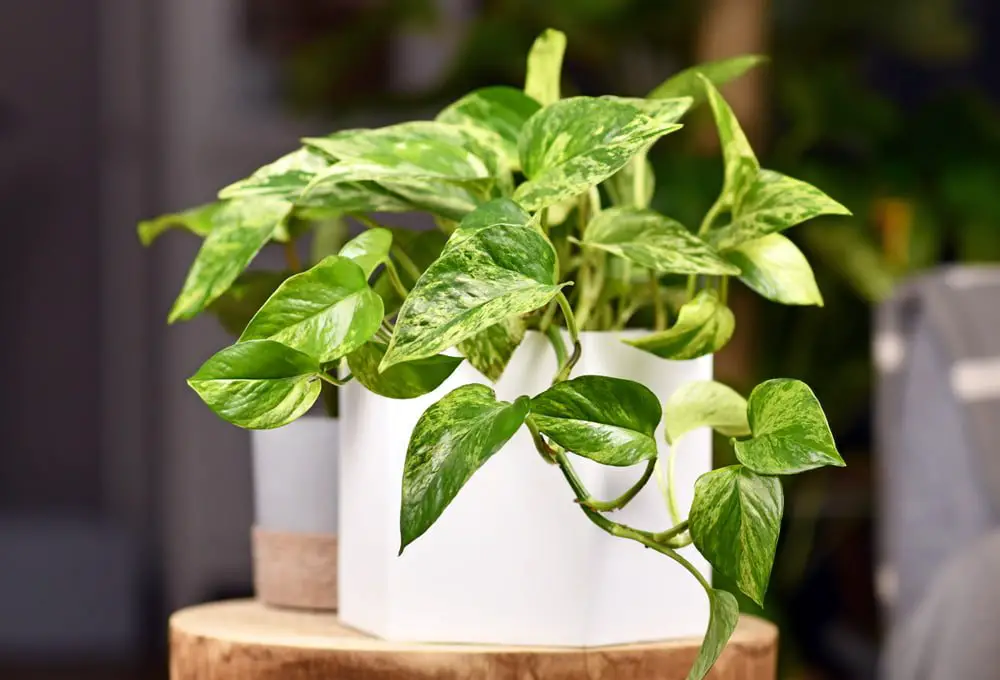
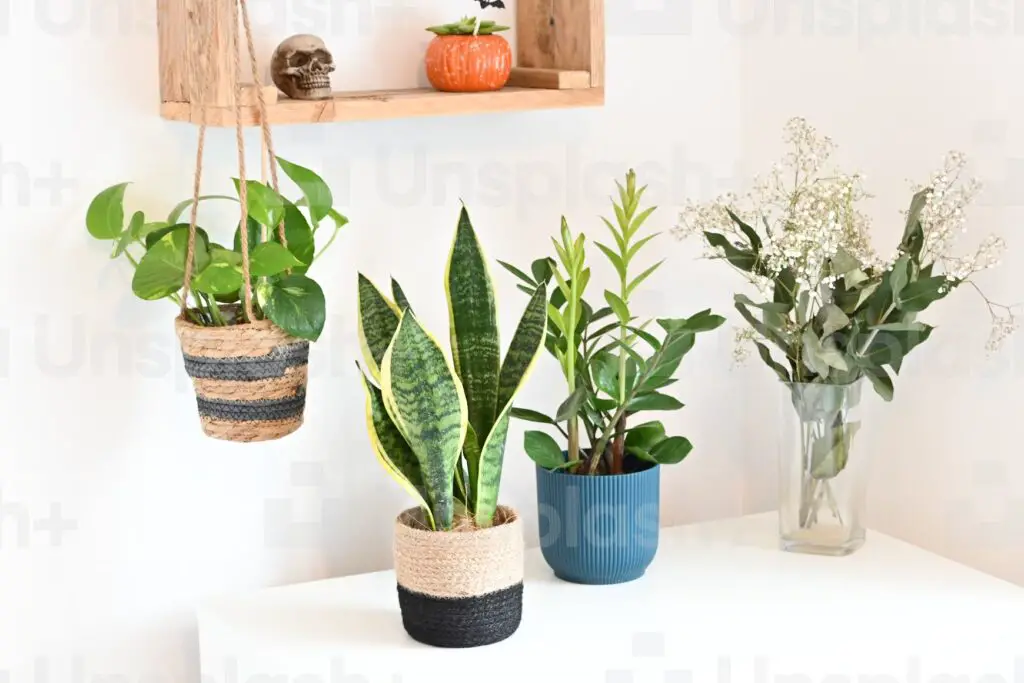
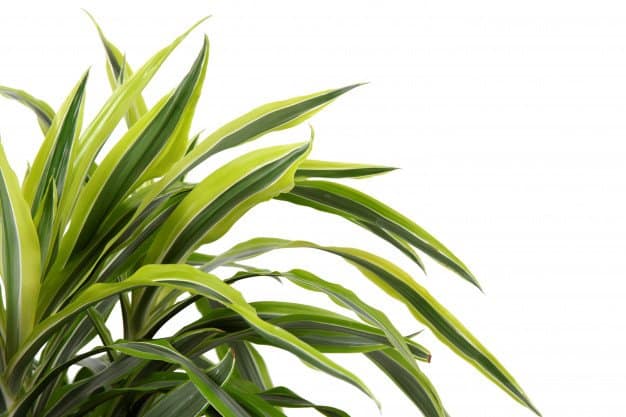
Maintaining a snake plant
Maintaining a snake plant is relatively straightforward, as these plants are low-maintenance. Here are some tips for maintaining a healthy snake plant:
- Provide adequate light: Snake plants prefer bright, indirect light, but can also tolerate low-light conditions. Avoid placing the plant in direct sunlight, as this can burn the leaves.
- Water the plant properly: Snake plants are drought-tolerant and do not require frequent watering. Allow the soil to dry out between waterings and avoid overwatering, as this can cause root rot. Water the plant thoroughly, but be sure to allow excess water to drain out of the bottom of the pot.
- Fertilise occasionally: Snake plants do not require frequent fertilisation, but can benefit from an occasional feeding. Use a balanced, water-soluble fertiliser and follow the instructions on the label carefully.
- Prune as needed: Snake plants are relatively slow-growing and do not require frequent pruning. However, occasional pruning can help to maintain the plant’s shape and size, and to remove any dead or damaged leaves.
- Check for pests: Inspect the plant regularly for signs of pests, such as mealybugs, spider mites, or scale insects. Treat any infestations promptly using manual removal or insecticidal soap.
- Repot as needed: Snake plants prefer to be slightly root-bound and do not require frequent repotting. However, if the plant has outgrown its container or the soil is compacted, it may be time to repot it in fresh soil.
How often do I water snake plants?
Snake plants can tolerate drought and can go long periods without water. Overwatering is a common problem with snake plants, so it’s important to let the soil dry out between waterings. Snake plants generally should be watered once every two or three weeks. The frequency of watering will depend on several factors, including the size of the plant, the size of the container, the humidity level, and the amount of light the plant receives. To determine if your snake plant needs water, stick your finger into the soil up to your knuckle. If the soil feels dry, it’s time to water the plant. If the soil feels damp or moist, wait a few more days before watering.
When watering a snake plant, be sure to water the soil rather than the leaves. Allow the water to soak into the soil and drain out the bottom of the pot. Avoid leaving the plant sitting in standing water, as this can cause root rot. Overall, snake plants are relatively low-maintenance and do not require frequent watering. It’s important to let the soil dry out between waterings and to avoid overwatering, as this can harm the plant.
How often do I need to prune snake plants?
Snake plants are relatively slow-growing and do not require frequent pruning. However, occasional pruning can help to maintain the plant’s shape and size, and to remove any dead or damaged leaves. Snake plants can be pruned once or twice a year, or as needed. Here are some tips for pruning a snake plant:
- Use clean, sharp scissors or pruning shears to avoid damaging the plant.
- Cut off any dead or yellowing leaves at the base of the plant. These leaves will not recover and can be removed to improve the plant’s appearance.
- Trim any leaves that are too long or have become damaged. Cut the leaves back to the desired length, being careful not to remove too much of the leaf.
- If the plant has become too large or overgrown, it can be divided. Gently remove the plant from its container and separate it into smaller sections, each with several leaves and a healthy root system. Repot each section in a new container with fresh soil.
Pest control for snake plants
Snake plants are relatively pest-resistant, however they can be susceptible to infestations from pests such as mealybugs, spider mites, and scale insects. Here are some tips for controlling pests on snake plants:
- Inspect the plant regularly: Regularly inspect your snake plant for signs of pests, such as white, fuzzy patches, sticky residue, or small bugs on the leaves. Early detection can help to prevent the infestation from spreading.
- Isolate the plant: If you notice an infestation on your snake plant, isolate it from other plants to prevent the pests from spreading. You can also place the plant outside for a few hours to encourage natural predators, such as ladybugs, to feed on the pests.
- Remove pests manually: You can remove small infestations of pests by wiping the leaves with a soft cloth or cotton swab dipped in rubbing alcohol or insecticidal soap. Be sure to cover both the top and bottom of the leaves, as well as the stems and soil.
- Use insecticidal soap: You can also use a commercial insecticidal soap or neem oil spray to control pests on your snake plant. Follow the instructions on the label carefully and avoid spraying the plant during hot or sunny weather, as this can cause damage to the leaves.
- Keep the plant healthy: Keeping your snake plant healthy and well-cared for can help to prevent infestations from occurring. Be sure to provide the plant with adequate light, water, and nutrients, and avoid overwatering or exposing it to extreme temperatures.
Overall, controlling pests on snake plants requires a combination of vigilance, prevention, and treatment. Regular inspection, isolation of infested plants, manual removal of pests, and use of insecticidal soap can all help to keep your snake plant healthy and pest-free.



Conclusion
Snake plants are a popular and easy-to-care-for indoor plant that can add a touch of greenery to any space. They are also low maintenance, long narrow leaves, upright growth habit. To properly care for a snake plant, provide it with adequate light, water, fertilise occasionally, prune as needed, and regularly check for pests.

